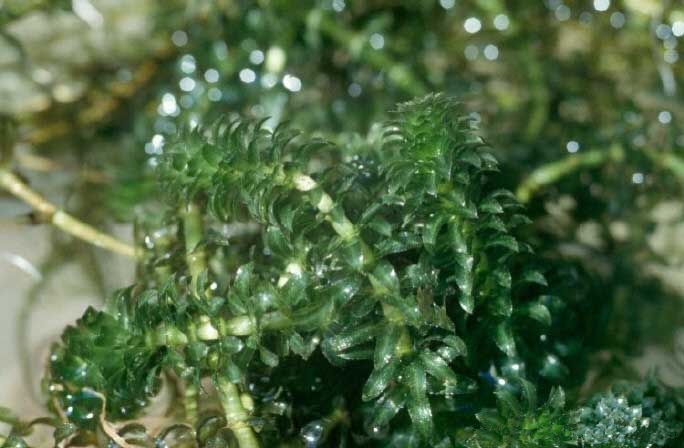Hydrilla verticillata
Description
- Native to Africa, Australia, and parts of Asia
- A submersed, rooted aquatic plant
- Leaves are whorled around the stem in bunches of 3-8
- Tiny, translucent to white flowers produced on the upper branches in late summer and fall
- Has four methods of reproduction: fragmentation, tubers, turions and seeds
- Grows in canals, springs, streams, ponds, lakes, rivers, and reservoirs
- Popular/common aquarium plant
Consequences of invasion
- It is known for completely dominating the ecosystems which it invades, decreasing biodiversity and altering the existing ecology
- Clogs irrigation structures and can affect hydroelectric power generation
- Dense infestations impede water-based recreational activities
- Can decrease real estate values
Status in the CKISS region
- Hydrilla is currently classified as Prevent on the CKISS Annual Priority List.
- It is also classified as a Provincial EDRR species by the provincial government, and is managed by the Province.
- Please report any sightings immediately to the Province.
- It is not known to occur within the CKISS region.
- To learn more about how CKISS classifies and manages invasive species, see our Invasive Species Priority Lists page.
Integrated pest management options
- Never discard aquarium contents into water bodies
- Purchase alternative, non-invasive aquatic plants for aquariums and aquatic gardens
- Remove any plant material from boats, anchors, trailers, fishing gear and other equipment before leaving the water body
- Because this plant spreads readily through fragmentation, mechanical controls such as cutting and harvesting are not recommended while the plant is still invading, as this can increase its rate of spread

